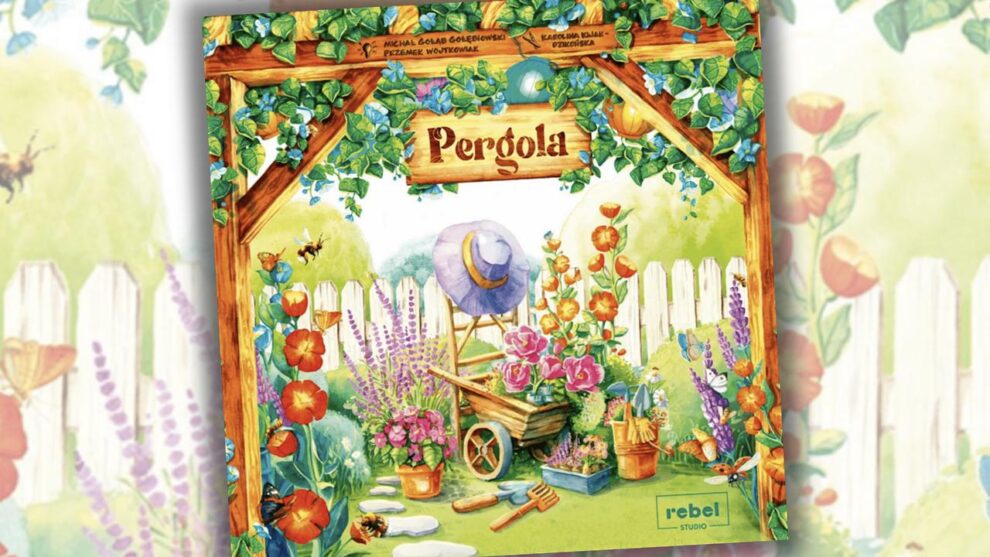Disclosure: Meeple Mountain received a free copy of this product in exchange for an honest, unbiased review. This review is not intended to be an endorsement.
Turning Over a New Leaf
Back at PAX Unplugged 2024, my husband, Brock, and I got lucky to sit down for an early sneak peek at Pergola from Rebel Studios. Though we only got to spend about twenty minutes with it, I have been looking forward to getting my hands on a review copy to put it through its paces. It probably speaks to my excitement that Pergola took less than an hour and a half to go from my front porch steps to being on the table, ready to play.
At its core, Pergola is a simple set collection game that takes place over fifteen turns. On your turn, you will select from one of four possible actions, gaining resources as indicated and then either moving insects around your garden, collecting a leaf to gain more resources, moving a water droplet down a cascading waterfall, or hopping your frog around on different lily pads to claim more resources. There are roughly a dozen different resource types to keep track of, and while it can be overwhelming, they all combine towards your endgame scoring. Hollyhocks score for each set of three you collect, butterflies score for how high you’ve stacked your hollyhocks vertically, etc. While I won’t go over every permutation of scoring, suffice it to say that each insect or plant in the game scores based on how many of them you collect in various sets.
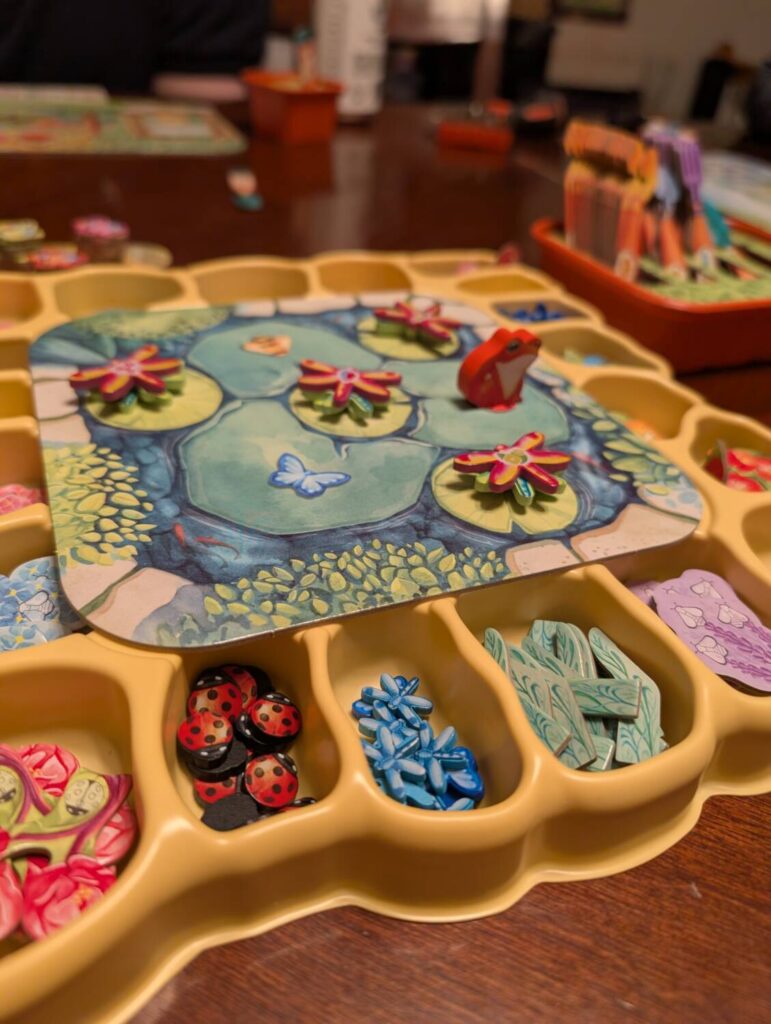
It all culminates at the end of fifteen turns, where you go through each separate thing in your garden and tally up your points. The term “point salad” has been thrown around the board game world for quite some time as a usually derogatory way to describe games where you have a ton of ways to score points, and the most points wins. Pergola is one of those games where every action you take scores points in some way. The game moves along briskly, but the last couple of turns slow down significantly as players try to calculate and optimize every last point they can obtain using their final actions. That being said, I don’t think a game being “point salad” is inherently a negative thing! Yes, it can divorce you from the theme or make the game feel more mechanical and programmed than needed, but Pergola manages to avoid that by doubling down on the theme.
Bee-utiful Bits
I’ve been anxiously awaiting Pergola because the game pops off the table. It might be the most beautiful game I’ve ever seen. Artist Karolina Kijak, who also employed a similar art style for Meadow, uses watercolors to create a gorgeous storybook-like aesthetic that permeates the game. Part of the appeal of gardening is creating beauty in the world. That appeal is well translated to Pergola, as you place lavender plants, buttercups, hollyhocks, and magnolias in your garden, filling in the blank spaces on your board and creating something that approaches an art piece. That’s not to mention the gorgeous wooden meeples of frogs and dragonflies in various colors and sizes, which add to the overall visual aesthetic. As we wrapped up our first game, I took a moment to linger and stare at my board before wiping all the pieces away to put the game away, because it was so charming and cozy.
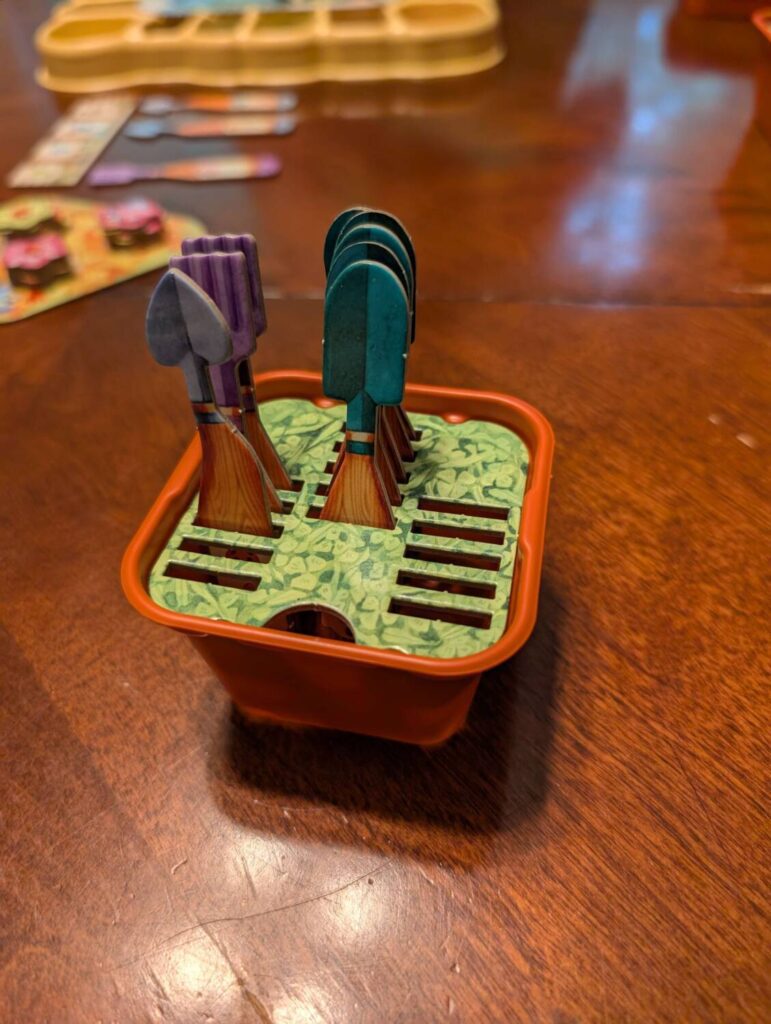
Speaking of cozy, the team at Rebel Studios has gone all-in on the theme of this game. Did Pergola need individual flower pots for each player to store the action markers? Certainly not—and if anything, the flimsy cardboard toppers for the pots felt alarmingly vulnerable to snapping in half. However, it significantly adds to the game’s theme and immerses you in the wonderful, watercolor world of Pergola. Sure, the larger tool holder that looks like a big flower pot could’ve just been individual piles of action tiles, and the action tiles could’ve been generic instead of shaped like different garden tools, but that little something extra adds so much flavor to the experience that I’m thrilled they went the extra mile. And that’s all before we get to wooden insects that have gorgeous artwork printed on them. It’s all just dripping in care and attention to detail because the designers understood that this game would live and die by the immersion and the theme.
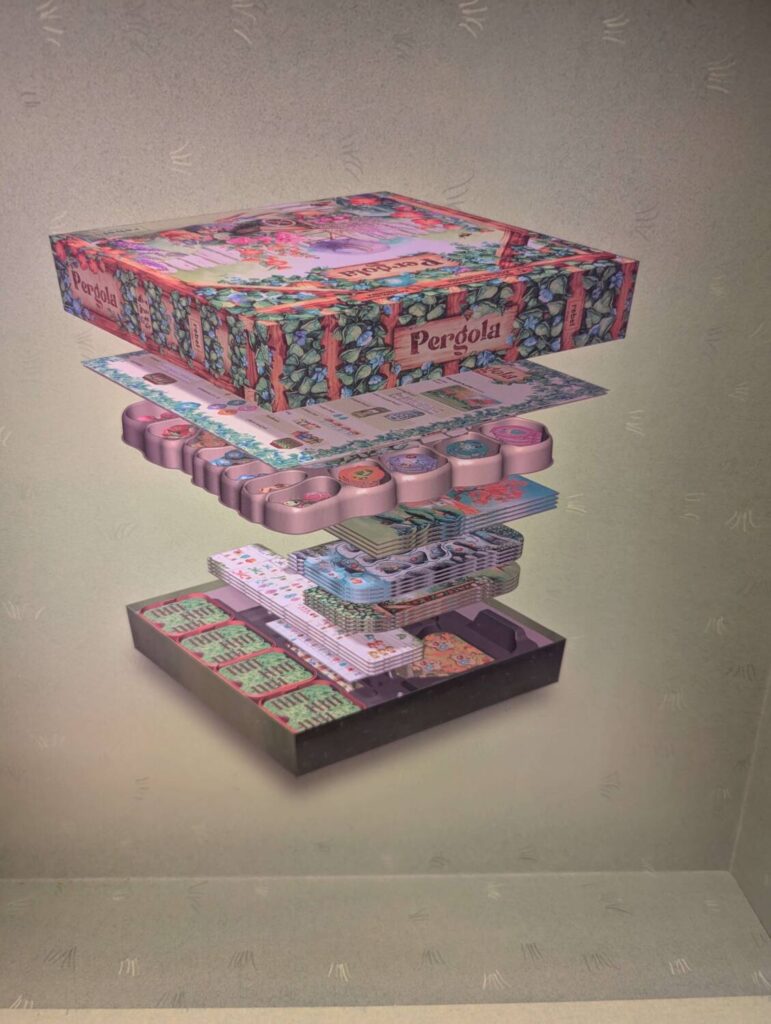
I’m also a sucker for a good storage solution. The included GameTrayz functional tray serves as an excellent storage for the 200+ individual components while also facilitating gameplay by allowing easy access to all components and having a spot to hold the pond board where your frogs hop around during the game. Yes, there are a lot of components, so much so that the initial punch-out and organization process when I first opened the game took as long as playing the actual game. It was a doozy. However, setting up and playing took a breezy 45 minutes once everything was organized.
The Root of the Matter
I loved my time with Pergola. It has been the perfect bite-sized snack for my game group to enjoy while waiting for a more substantial game to arrive at the table. It has been an excellent choice for my lighter gaming friends who prefer less intense games. Similarly, I played with some of my friends who have young children, and they were raving about how perfect it was, both thematically and complexity-wise, for their kids to pick up after a few plays. The gorgeous components and stunning visual presence certainly contribute significantly to that.
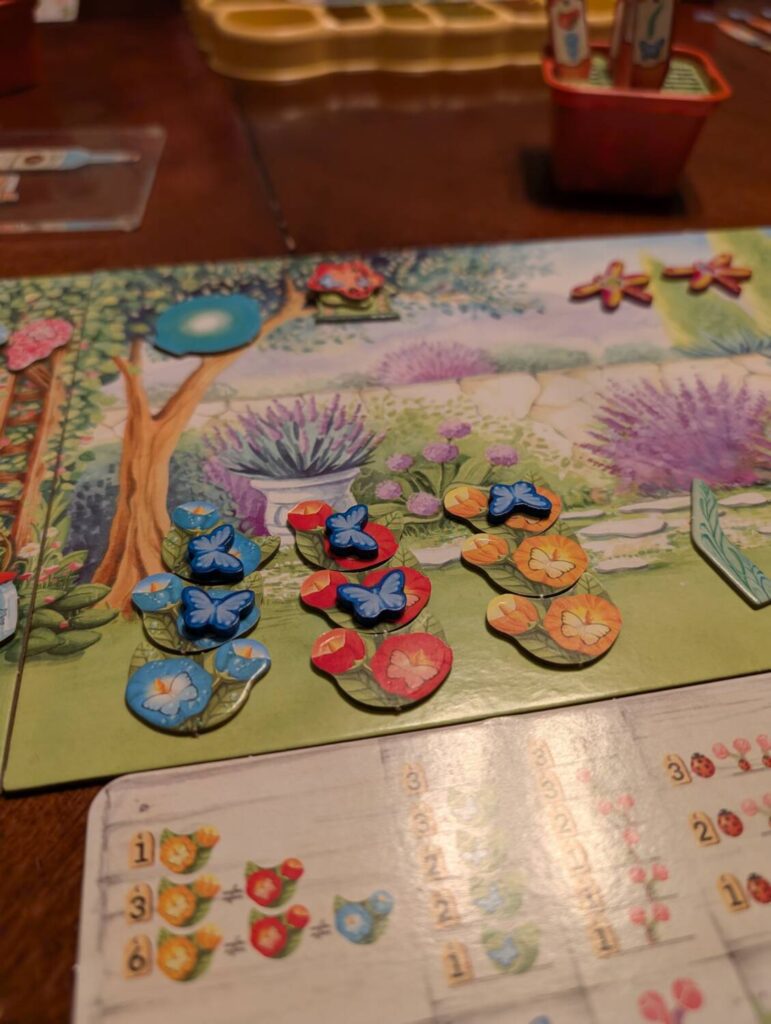
I mentioned earlier that this game falls into the “point salad” subgenre. I don’t think a game with a bunch of point-generating actions is inherently bad; however, I do think that the higher the complexity in a game like that, the less I enjoy the experience. Pergola nails the sweet spot for that particular type of game. It helps that I don’t have many other “point salad” type games in my collection, so this is an easy win whenever I want that experience.
I don’t know how much staying power Pergola will have, but it follows the trend of accessible, family-friendly, cozy games hitting the market. Perhaps the abstract “get sets, score points” gameplay will feel too simplistic in the long run. After a few plays, I’ve also found that scores tend to all fall within the same range of 80 – 110ish points, leading me to concerns that there’s not much room for iteration and innovation within the game’s framework. For now, though, it feels right at home on a shelf next to other cozy-adjacent games like Calico, Patchwork, and Everdell. For heavy strategy gamers, it won’t set your world on fire, but even a crunch-loving gamer like me found joy in the garden’s beauty.


